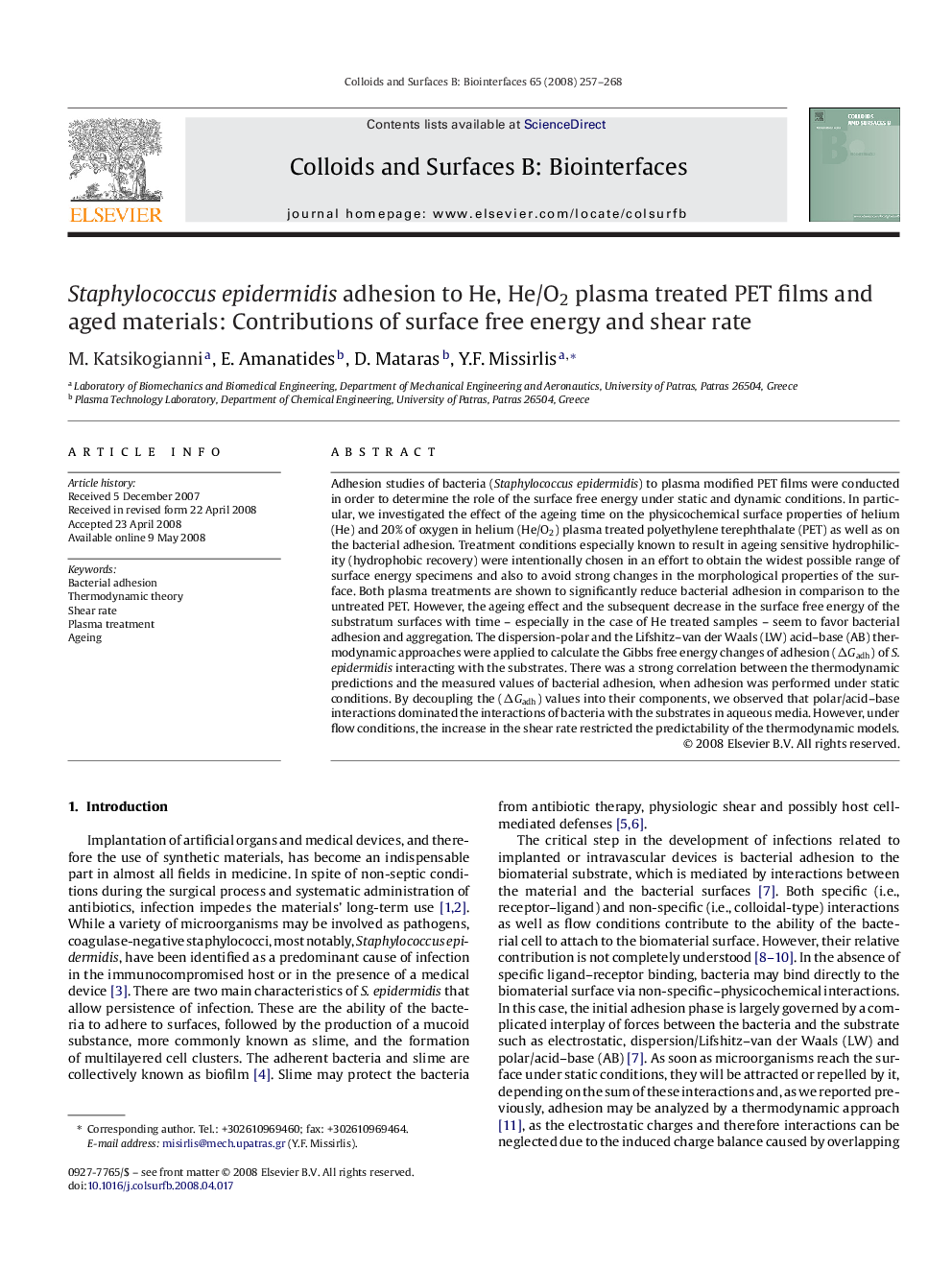| Article ID | Journal | Published Year | Pages | File Type |
|---|---|---|---|---|
| 602758 | Colloids and Surfaces B: Biointerfaces | 2008 | 12 Pages |
Adhesion studies of bacteria (Staphylococcus epidermidis) to plasma modified PET films were conducted in order to determine the role of the surface free energy under static and dynamic conditions. In particular, we investigated the effect of the ageing time on the physicochemical surface properties of helium (He) and 20% of oxygen in helium (He/O2) plasma treated polyethylene terephthalate (PET) as well as on the bacterial adhesion. Treatment conditions especially known to result in ageing sensitive hydrophilicity (hydrophobic recovery) were intentionally chosen in an effort to obtain the widest possible range of surface energy specimens and also to avoid strong changes in the morphological properties of the surface. Both plasma treatments are shown to significantly reduce bacterial adhesion in comparison to the untreated PET. However, the ageing effect and the subsequent decrease in the surface free energy of the substratum surfaces with time – especially in the case of He treated samples – seem to favor bacterial adhesion and aggregation. The dispersion-polar and the Lifshitz–van der Waals (LW) acid–base (AB) thermodynamic approaches were applied to calculate the Gibbs free energy changes of adhesion (ΔGadh) of S. epidermidis interacting with the substrates. There was a strong correlation between the thermodynamic predictions and the measured values of bacterial adhesion, when adhesion was performed under static conditions. By decoupling the (ΔGadh) values into their components, we observed that polar/acid–base interactions dominated the interactions of bacteria with the substrates in aqueous media. However, under flow conditions, the increase in the shear rate restricted the predictability of the thermodynamic models.
